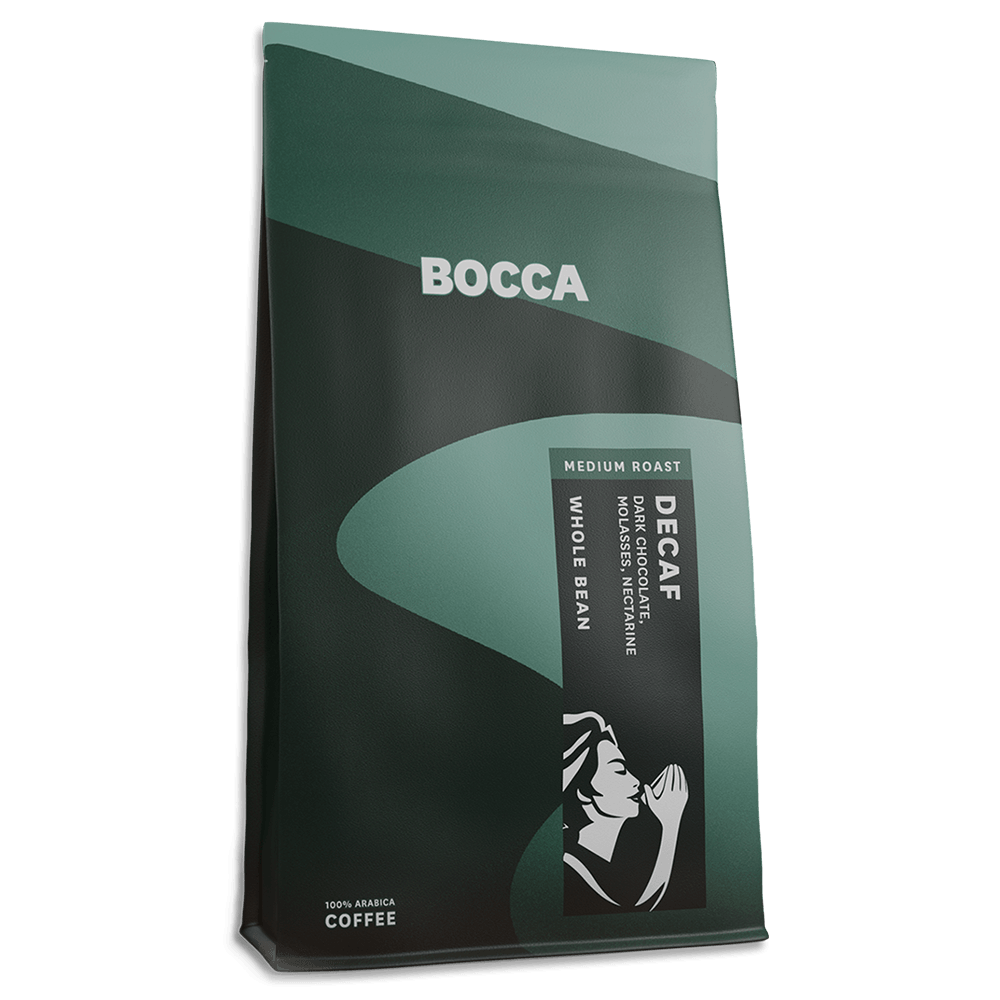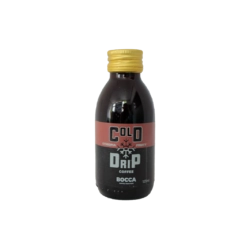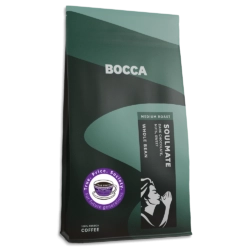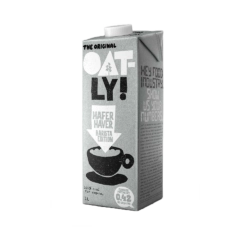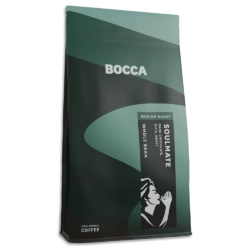Decaf | Ethiopia
€ 9,40 – € 36,00
Donkere Chocolade, Melasse, Nectarine
Koffiesoorten uit de Sidamo-regio staan bekend om hun complexiteit, met een grote smaakdiepte.
Koffiesoorten uit de Sidamo-regio staan bekend om hun complexiteit, met een grote smaakdiepte.
Cafeïnehoudende koffie is niet ieders kopje thee. Daarom bieden we dit premium alternatief voor gewone decaf, natuurlijk verwerkt onder de tropische zon. Eén keer proeven van de heerlijke tonen van donkere chocolade en nectarine en je zult niet geloven dat het een decaf is.
Meer over het CO2-decaffeïneproces
Cafeïnevrije koffie staat meestal bekend om zijn metaalachtige smaak. Door Menno’s ervaring bij Trabocca kwam hij erachter waarom: voor deze ondergewaardeerde koffie worden meestal hele oude koffieoogsten gebruikt. Bij Bocca gebruiken we echter alleen verse oogst van hoge kwaliteit. Sinds een paar jaar hebben we een biologische Ethiopische cafeïnevrije koffie op voorraad die afkomstig is van de Shakisso-boerderij van boer Haile Gebre. Het grootste compliment dat we krijgen, is dat mensen niet eens herkennen dat het een decaf is!
Dit komt door de manier waarop het wordt verwerkt. Tijdens het zogenaamde CO2-proces wordt vloeibare CO2 – net als in frisdrank die we drinken – gebruikt om de cafeïne in de bonen op te nemen. De CO2 pikt selectief cafeïne in de bonen op en wordt vervolgens uit het vat naar een verdamper geleid. Daar wordt het verdampt en opnieuw gecondenseerd, zodat de cafeïne uit de bonen wordt neergeslagen en vervolgens CO2 opnieuw in de koffie kan worden gebracht. Dit proces wordt keer op keer herhaald, totdat het cafeïnegehalte in de koffie minder is dan 0,01%. Het mooie van het CO2-proces is dat kooldioxide een 100% natuurlijke (en biologisch gecertificeerde!) chemische stof is. Het is overal te vinden en we consumeren het dagelijks. Het zit in het koolzuurhoudende water dat we drinken en in de lucht die we inademen. Dus, in tegenstelling tot andere processen waarbij producten zoals methyleenchloride worden gebruikt, laat het geen giftig materiaal achter. CO2 haalt ook alleen de cafeïne uit de koffiebonen, waardoor al het goede overblijft. Dit betekent dat de smaak- en aromastoffen daar blijven waar ze moeten zijn: in de boon.
Feiten
OVER DIT PRODUCT
Oorsprong
Ethiopië
Regio
Sidamo
Distrikt / Boerderij
Shakisso
Verwerkingsmethode
Gewassen
Variëteit
Ethopian Heirloom
Certificering
Biologisch
Hoogte
1900-1930 metres
Oogst
November - Februari
Recept
AANBEVOLEN METHODE: Espresso
Espresso
Dosis: 19 gram
Totale extractie tijd: 27 seconden
Filter
Dosis: 15 grams
Totale extractie tijd: 2.30 minutes
Procedure: 250 gram op 96 graden. 30 seconden met 50 gram water, let it bloom, aanvullen met water tot 250 gram
